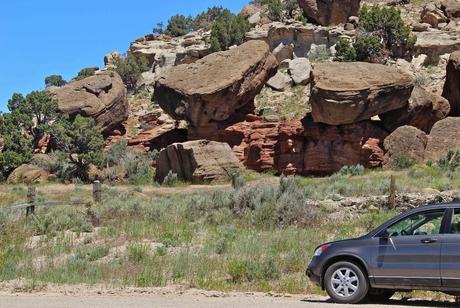 Several weeks ago I took a vacation in the Heartland of Laramide Tectonics. It was short but wonderful. I came home infused with Laramide stories -- of a time when Wyoming went from being a quiet sea to a land of rugged mountain ranges and deep basins, and in only 25 million years. My geo-posts aren’t quite ready though, so instead here’s an amazing plant -- one that blooms with a flamboyancy all out-of-proportion to its habitat.
Several weeks ago I took a vacation in the Heartland of Laramide Tectonics. It was short but wonderful. I came home infused with Laramide stories -- of a time when Wyoming went from being a quiet sea to a land of rugged mountain ranges and deep basins, and in only 25 million years. My geo-posts aren’t quite ready though, so instead here’s an amazing plant -- one that blooms with a flamboyancy all out-of-proportion to its habitat. This is a typical Heartland landscape, with juniper, small ponderosa pine, sagebrush, mountain mahogany, sparse short grassland and spectacularly tilted rock strata: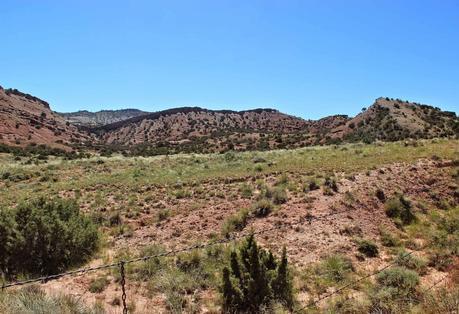 It was springtime in the Heartland and wildflowers were out in profusion but keep in mind -- this is a relative concept. The country is dry and vegetation is generally sparse; these are landscapes of muted colors.
It was springtime in the Heartland and wildflowers were out in profusion but keep in mind -- this is a relative concept. The country is dry and vegetation is generally sparse; these are landscapes of muted colors.
The most obvious bloomers were the rough mule’s ears (Scabrethia scabra), with flower heads several inches across.
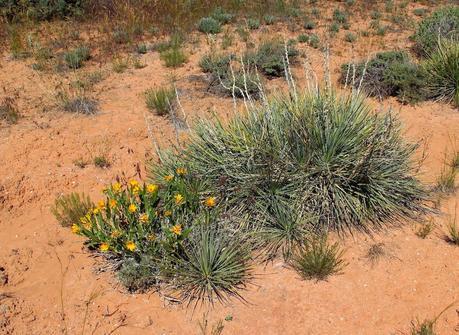
Rough mule's ears, with yucca, sagebrush, blackbrush and other highly drought-tolerant plants.
Real mule’s ears (Wyethia) has leaves that really do look like a mule’s ears. But this close relative gets the same name even though its leaves don’t match. However, they’re definitely rough to the touch (scabrous).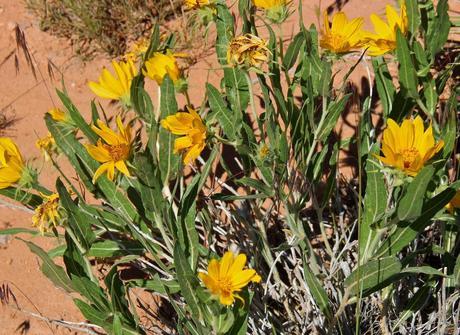

Wild buckwheat (Eriogonum) in center with desert sandwort (Eremogone) on right, on a dry rocky south-facing slope. The buckwheat is about four inches tall.
A warm dry wind blew most of the time so I rarely tried to photograph flowers. But there was one morning when I couldn’t resist. I was walking along a ridgecrest to view lithified remains of the tidal flats that were so common in Wyoming 200+ million years ago ...
Arrow points to brick-red Chugwater Formation -- sediments deposited in Triassic tidal flats.
... when suddenly I was stopped in my tracks by a flash of bright pink.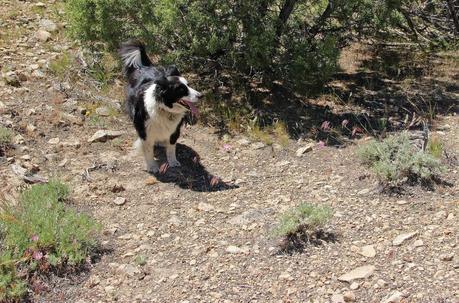
There are at least four bright pink flowers in this photo -- click on image to find them.

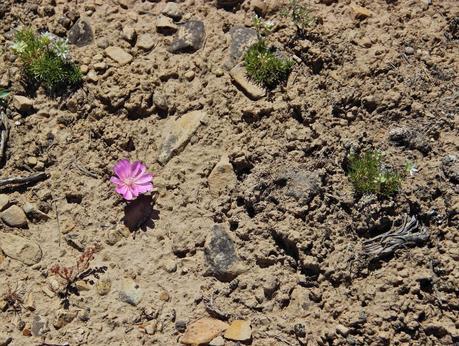
Bitterroot in typical dry rocky habitat, with desert sandwort.
Bitterroot spends most of the year as a fleshy root that is surprisingly large (to 12 inches) given the size of the plant we see. The unassuming leaves appear in spring, photosynthesize for awhile to replenish root stores, and then wither as the first flowers open. The flowers are spectacular -- bright, well over an inch across, with many petals. Color ranges from pale pink to deep rose to occasionally white. All the ones I saw were deep pink.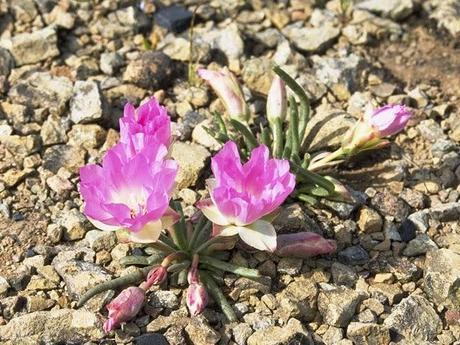
Bitterroot with leaves and first flowers. Lady Bird Johnson Wildflower Center, photo by Fran Cox.
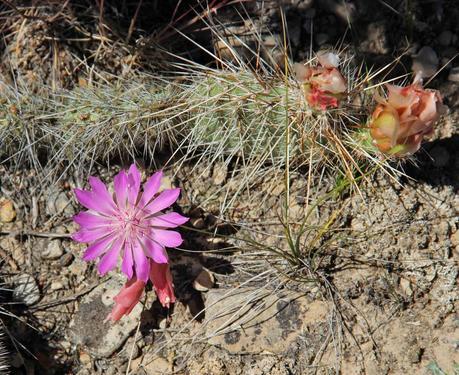
Flower with several buds below. Upper right, prickly pear cactus almost in bloom.
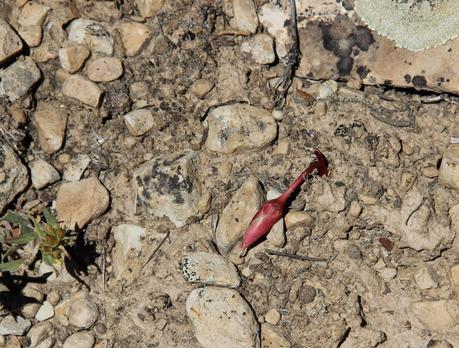
Bitterroot bud in what strikes me as a really tough place to grow!
Then I found some curious coppery delicate flower-like items lying on the ground.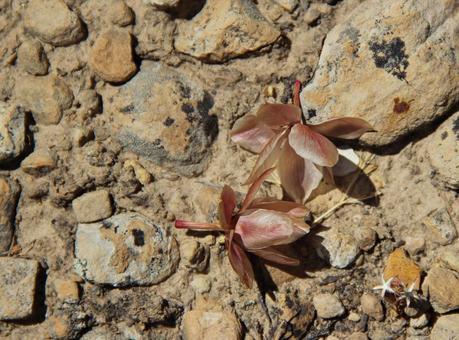
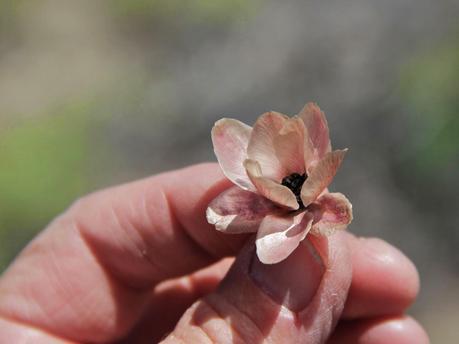
Black seeds in opened capsule, surrounded by dried sepals.
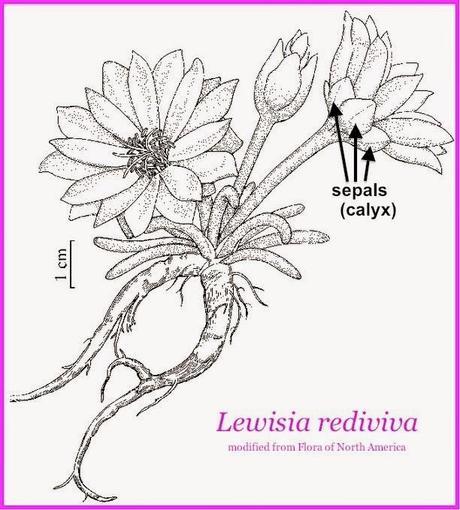
The sepals together form the calyx; source (modified).
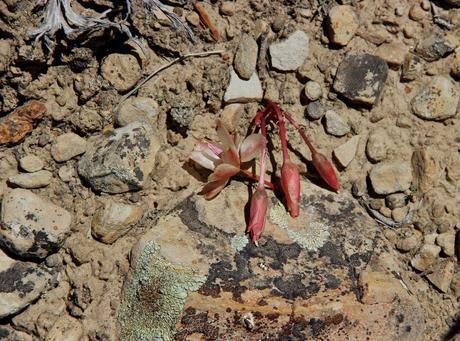
Here a dried calyx has been trapped by several bitterroot buds.
The scientific name for bitterroot is Lewisia rediviva. For many of us in the western USA, “Lewisia” brings to mind (correctly) Meriwether Lewis -- the Lewis of Lewis and Clark who explored the immense Louisiana Purchase acquired from France in 1803. The expedition left St. Louis in May of 1804, reached the west coast in November of 1805, over-wintered, and arrived back in St. Louis in September of 1806. On the way home, they stopped at Traveler’s Rest, Montana in early July, where Lewis collected several specimens including six plants of what would become Lewisia rediviva. This was one of 134 specimens sent to botanist Frederick Pursh, who determined it was a new genus and named it in honor of Lewis. Several roots had been planted, and they produced leaves even though they had been out of the ground and without water for several years. This inspired the specific epithet rediviva, meaning “brought back to life” (source).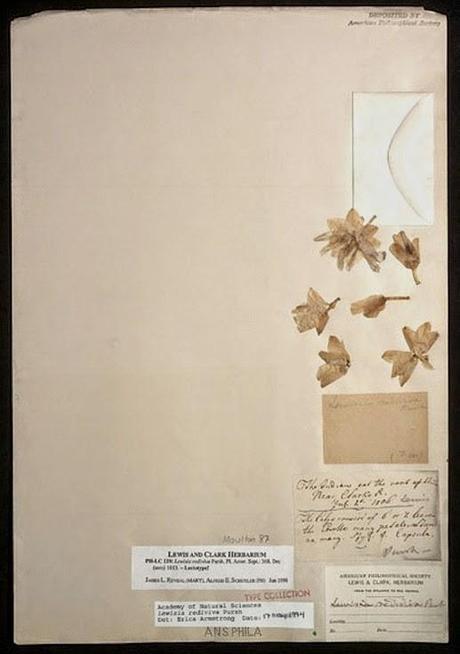
Meriwether Lewis's bitterroot specimen, collected in 1806. Source.
The origin of the common name is not clear. When Lewis tasted the roots, given to him by Indians, he found them “naucious to my pallate” (source). How could this be?! They were highly valued by many tribes, both as a staple and a trading commodity. However some tribes did call the roots “bitter” or “black medicine” (source). Perhaps that’s the source of the name.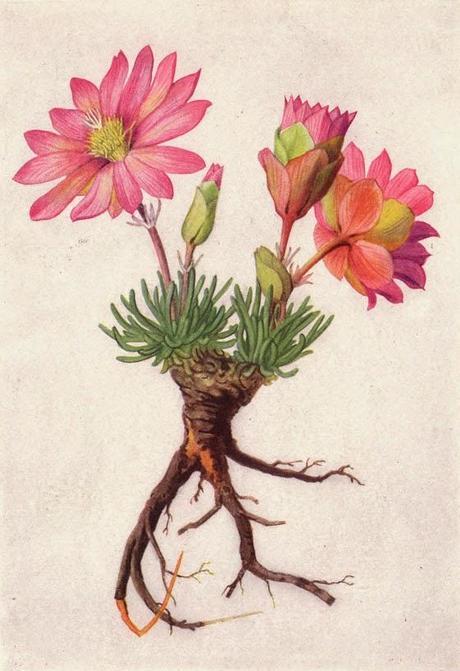
The amazing and beautiful bitterroot, so well-adapted to its harsh environment. This is one of the wonderful plant illustrations of Mary E. Eaton.
For more information on bitterroot biology and history, as well as tips for cultivation, see Lewisia rediviva, Bitterroot (PDF) from the Montana Native Plant Society.
